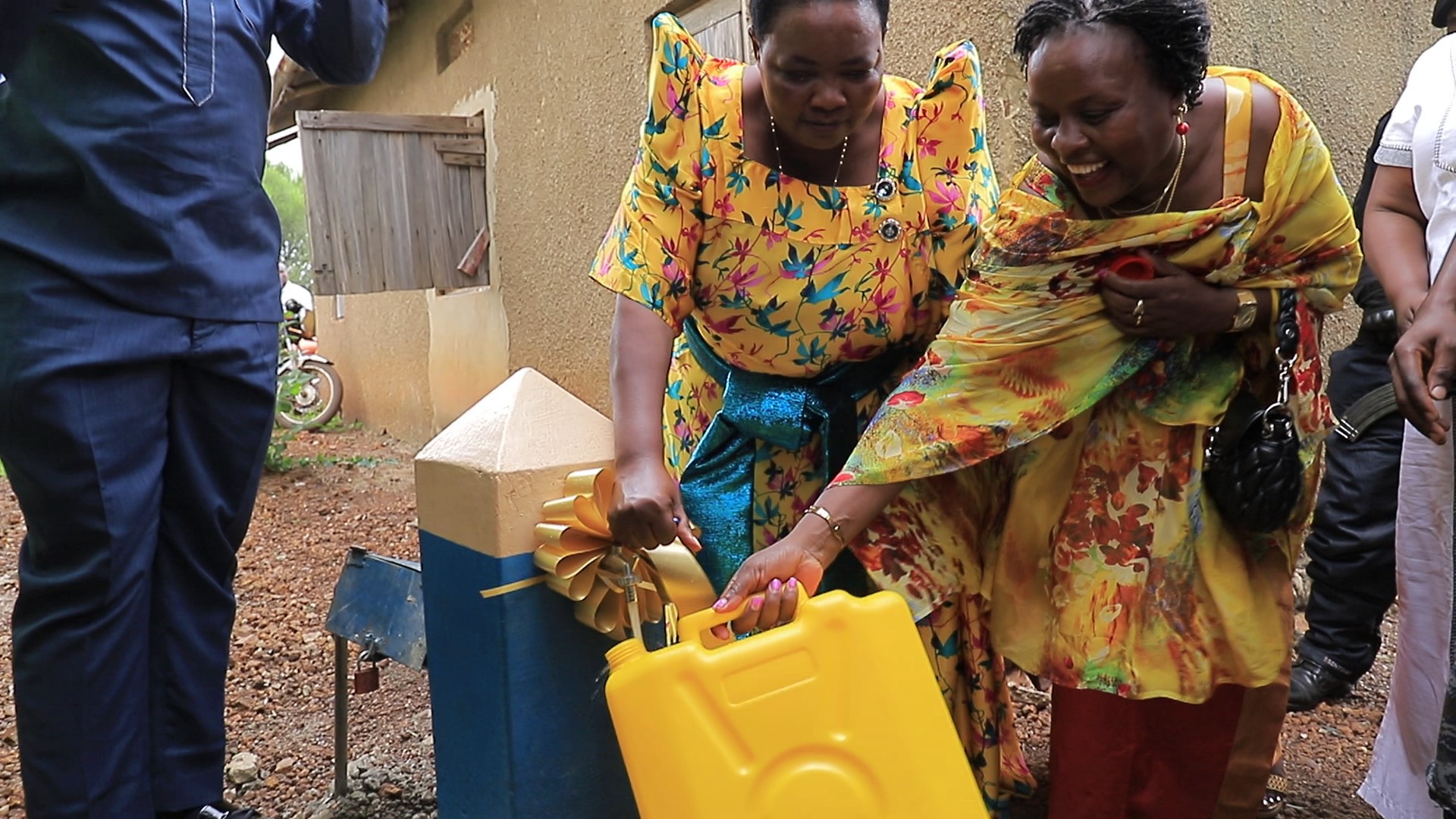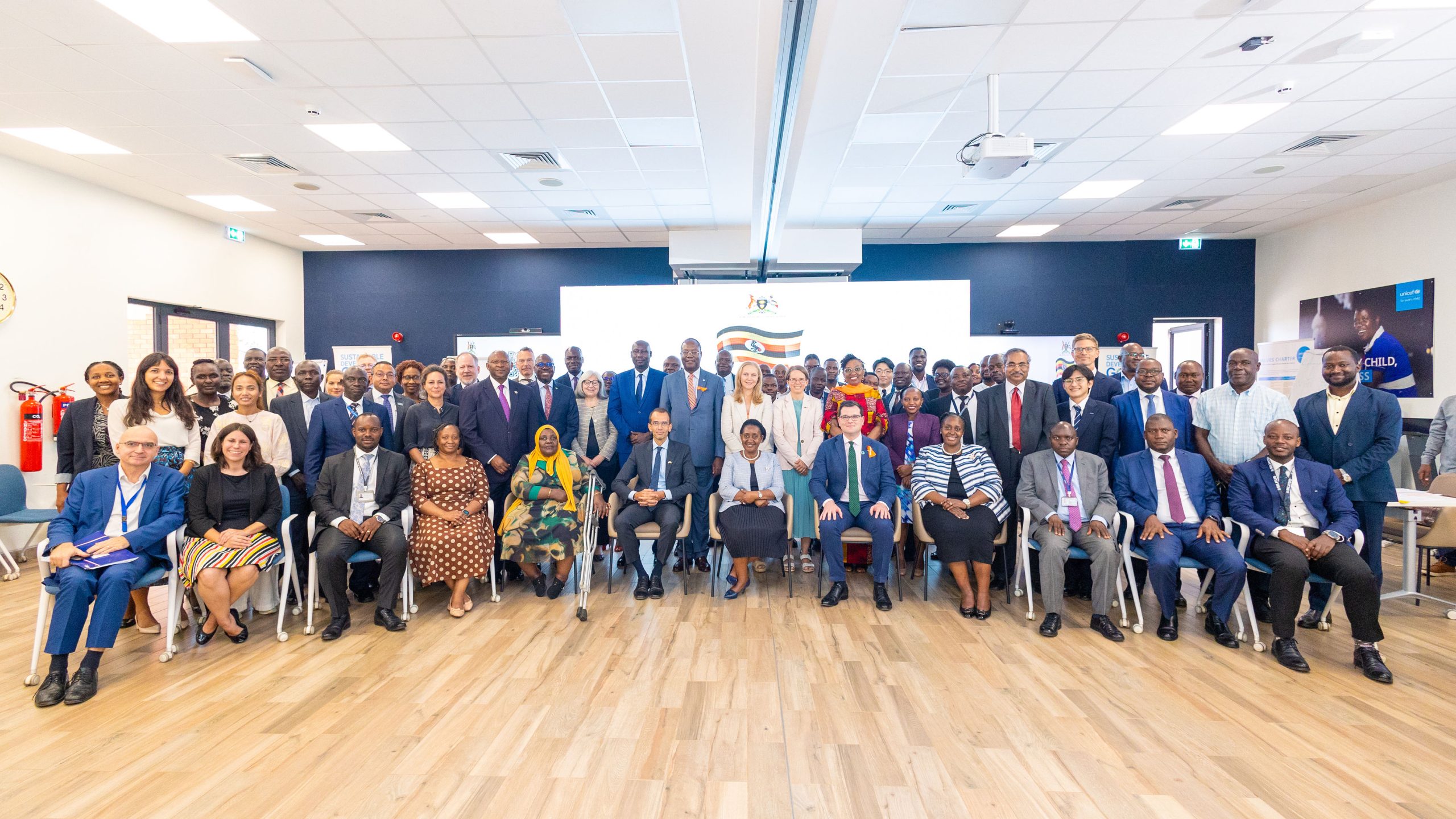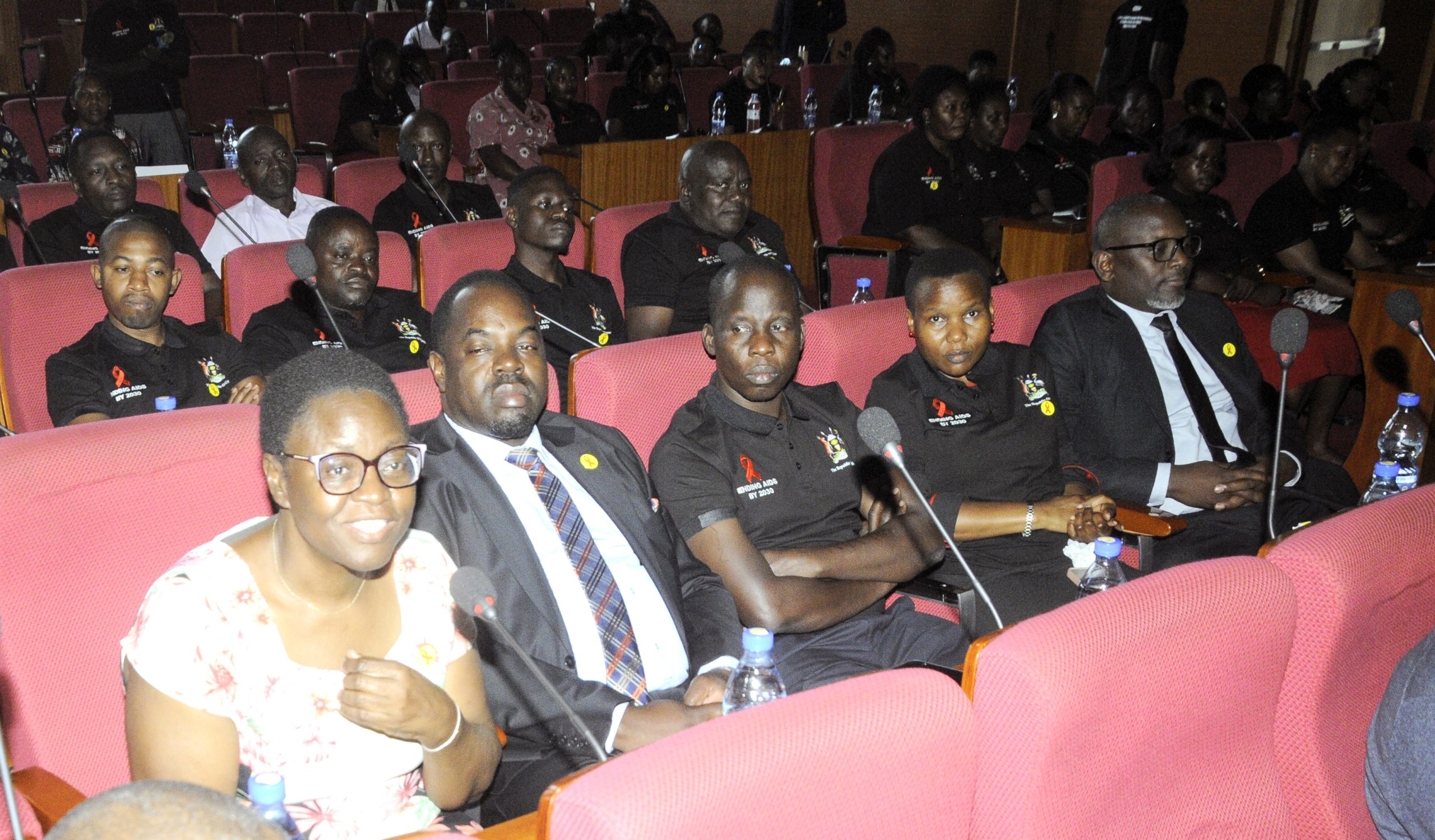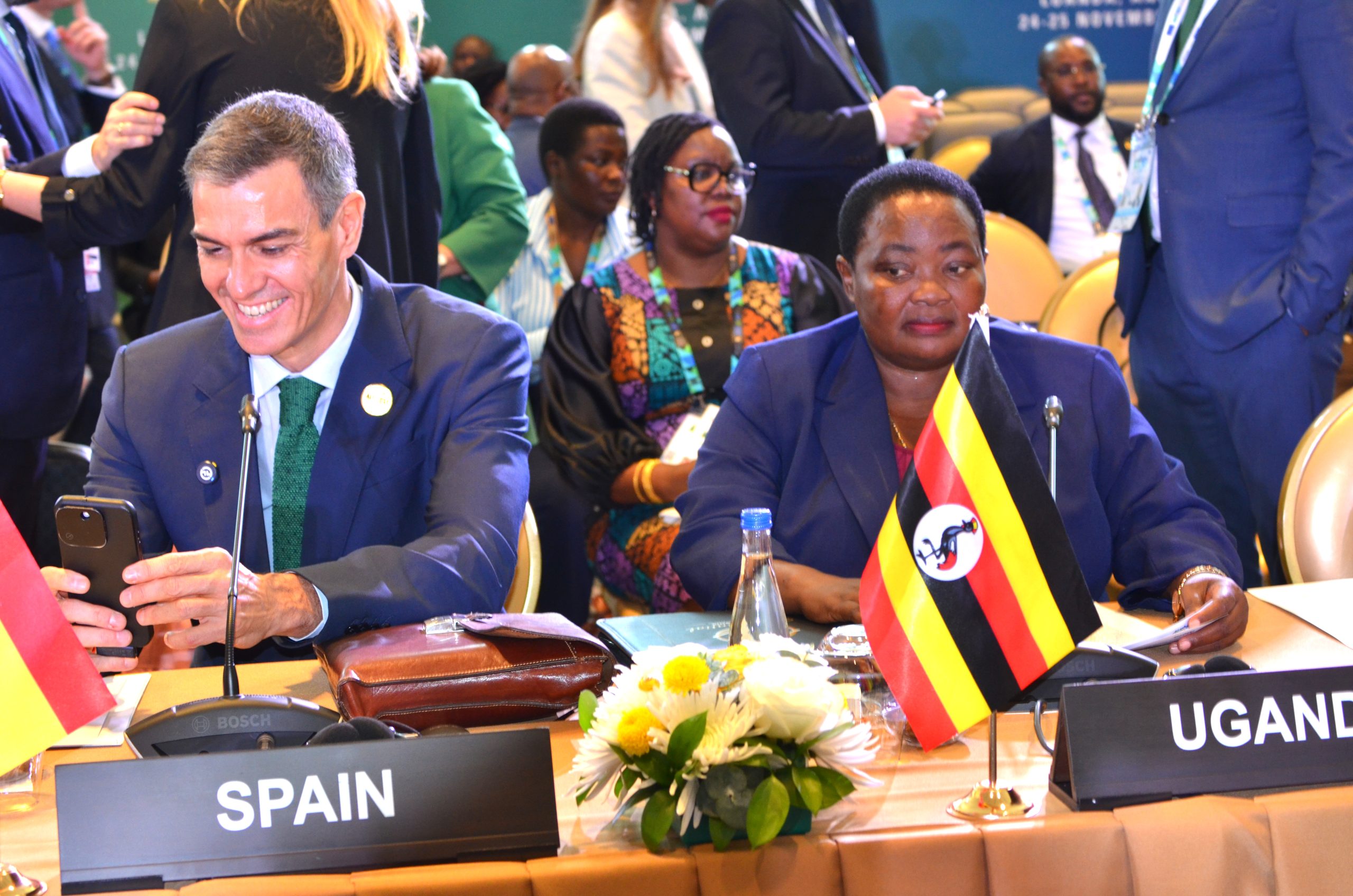By: Ismael Kasooha
Isingiro
As the saying goes; ‘water is life’, the people of Isingiro have been finding it difficult to access clean and safe water for decades.
Janefer Munkundire, 32, a mother of four children and resident of Mbaare village, Mbaare sub county in Isingiro district narrates that fetching water has been one of the tiresome and time consuming tasks yet she had to do it on a daily basis.
Munkundire says that she would wake up early in the morning to rush to the pond so that she can somehow get clean water before other people could fetch.
“I would wake up as early as 6:00am so that I can fetch clean water before the other people come,” he says.
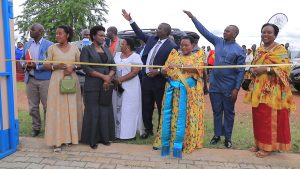
Cutting the tape as the Premier commissions water project
Munkundire says that they would share the same water source with animals and when the animals get there first then they would fetch muddy waters but had no alternative.
“You know we were competing with animals for the same water and whenever one delayed then the water would turn into mud but we had no alternative,” says Munkundire.
Munkundire says that with the introduction of the piped water scheme life has become easy and the quality of water has improved.
“The water we are getting from the piped water supply is very clean and safe and even the time we have been spending to fetch water has reduced. We hope our way of life shall improve greatly,” says Munkundire.
Jonan Turyasingura, a resident of Mbaare trading center, Mbaare sub county says that they have been fetching water from a distance of over 2km and carrying it on their heads.
“Life has not been easy for us here because of water scarcity. We would labour to fetch water first thing in the morning if at all we were to somehow get clean water from the well,” says Turyasingura.
He says that now that they have been given clean and safe water they can concentrate on improving their household incomes by engaging in programmes such as the Parish development model (PDM).
“The water tap is in my compound therefore the time we have been spending fetching water from far away shall be used for developmental work,” says Turyasingura.
On Friday, the 12th of May 2023, the Prime Minister of Uganda Robinah Nabbanja commissioned the sh.4.5bn Ruteete– Kibeba Water Supply and Sanitation Scheme as promised by president Yoweri Museveni during the 2020/21 election campaigns.
Jack Twerebere, the Isingiro district water officer says that the Ruteete– Kibeba Water Supply and Sanitation Scheme is serving over 10,000 people and 11 villages that comprise both the host communities and Refugees in Nakivale settlement camp.
“We are optimistic that now that the piped water scheme has been commissioned for public use, water related diseases and illnesses shall reduce and even the time spent by the public fetching water shall go down,” says Turyasingura.
Turyasingura agrees with the community members that the situation Before Intervention has been dire and the community used to fetch water from springs and ponds.
After the intervention of the Office of the Prime Minister (OPM) under the Development Response to Displacement Impacts Project (DRDIP), the Situation has changed for the better.
The 26.5km distribution pipe line serves at least 11 villages with 27 Public tap stands, 5- stance latrine blocks, water office, chemical house, Guard/attendant house and Eco-San Toilet, Hydro power extension including supply and installation of a transformer.
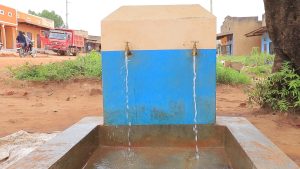
Public taps in Mbaare trading center supplying water to residents
The project came to address the challenge of water scarcity for both the refugees and host communities.
The project was completed in August 2022 and has been waiting for commissioning and currently serving 9,855 people including both refugees and the host communities.
The prime minister Robinah Nabbanja while commissioning the water supply and sanitation scheme at Mbaare sub county headquarters says that President Yoweri Museveni promised the people of Bukanga water and now the government has delivered.
“The commissioning of the multi-billion water project has come at a time when the government is reviewing the manifesto implementation and that the president promised the people of Isingiro clean water and it is being delivered,” says Nabbanja.
Nabbanja says that this water scheme is intended to address the water scarcity challenge that has taken a long time in Isingiro district.
She asked the people of Isingiro to now dedicate the time they have been spending on fetching water from long distances to development by embracing government programmes, especially the Parish Development Model.
The premier tasked Engineer Pamela Besigye, from OPM to make an assessment of the 34 villages that were left out in the project so that the government can consider extending piped water services to them.
The Isingiro District LC5 Chairman Aaron Turahi thanked the government for extending piped water to the people of Bukanga but asked the government to ensure the Isingiro water project also takes off.
“We are very happy that the NRM government has fulfilled one of its pledges to the people of Bukanga but we still need the bigger project of Isingiro town,” says Turahi.
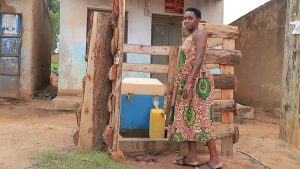
Scovia Katushabe fetching water from a public tap in Mbaare trading center Isingiro District
The Isingiro district woman member of Parliament Clare Mugumya and Bukanga south MP Stephen Kangwagye commended the government for the services offered to the people of Isingiro but highlighted some of the challenges they are facing.
Stephen Kangwagye, the Bukanga south Member of Parliament expressed concern that sh7bn meant for the feasibility study for Isingiro-Rakai road might be returned to the treasury if it’s not utilized before the end of June.
“The sh7bn has remained idle in the solicitor general’s office and we are worried that this money will be returned to the treasury at the end of June and this will affect the plans to work on the road,” says Kangwagye.
The project development objective is to improve access to basic social services such as health, education, water and sanitation, expand economic opportunities and enhance environmental management for refugee host communities and settlements.
End
